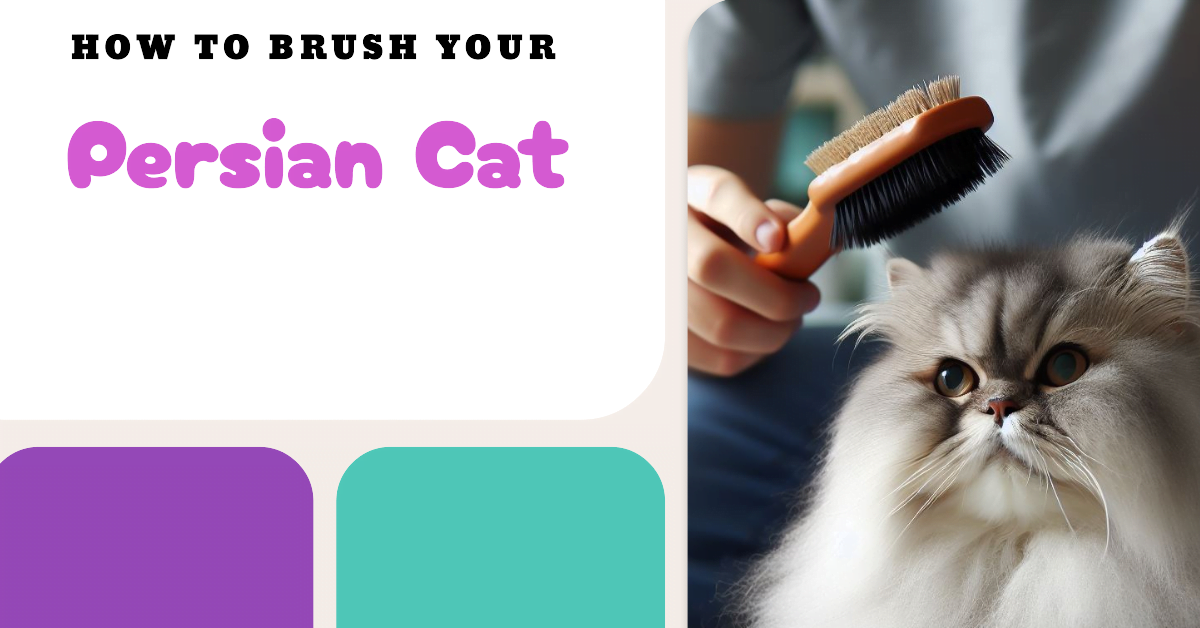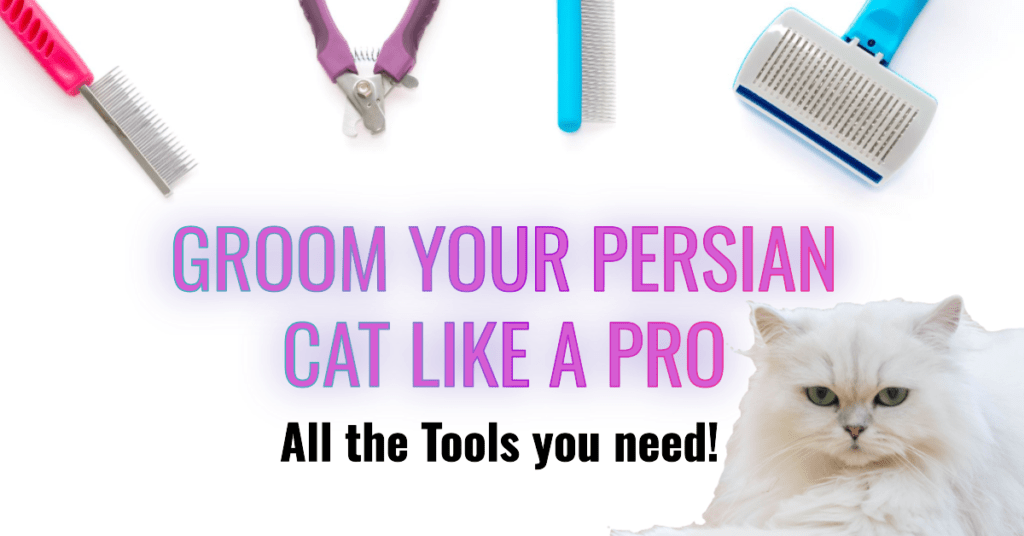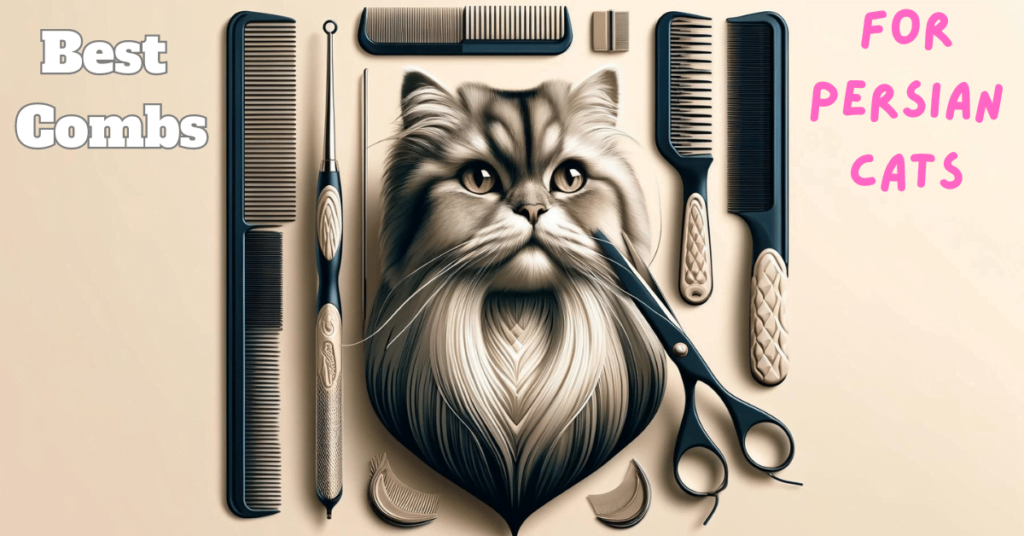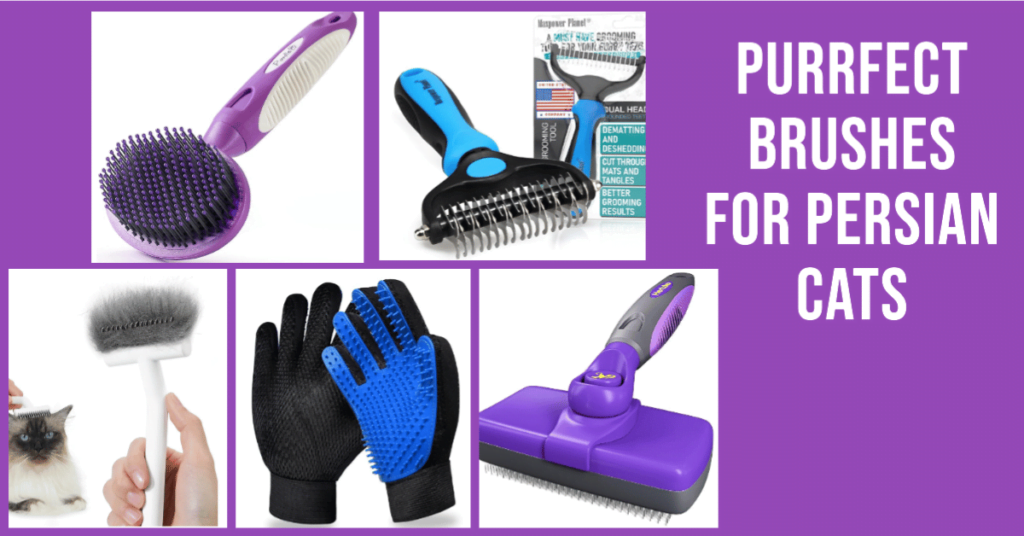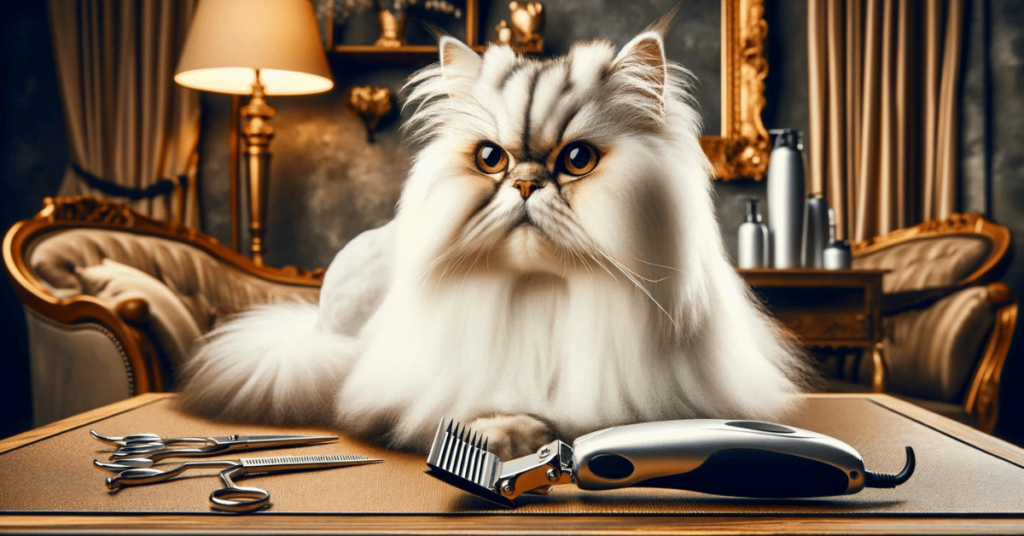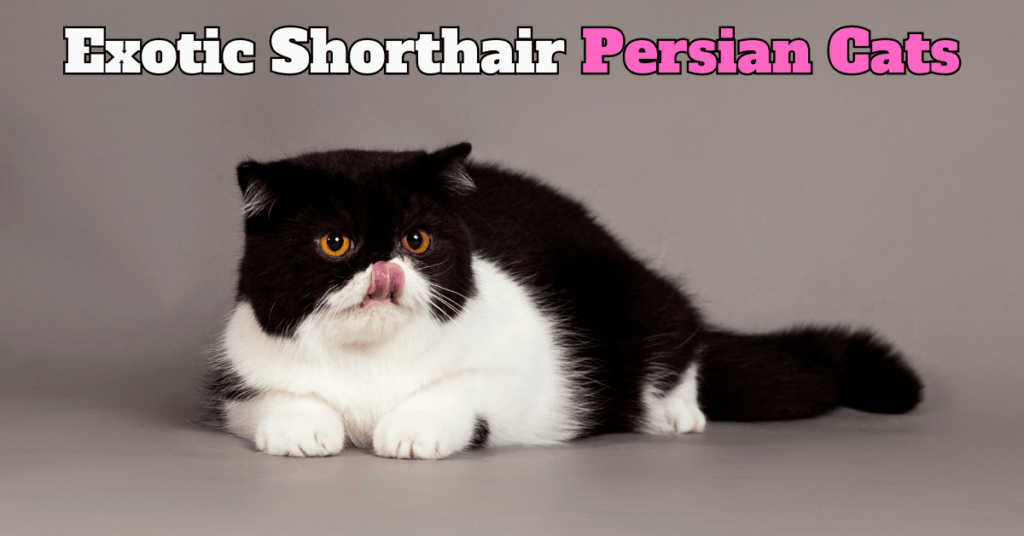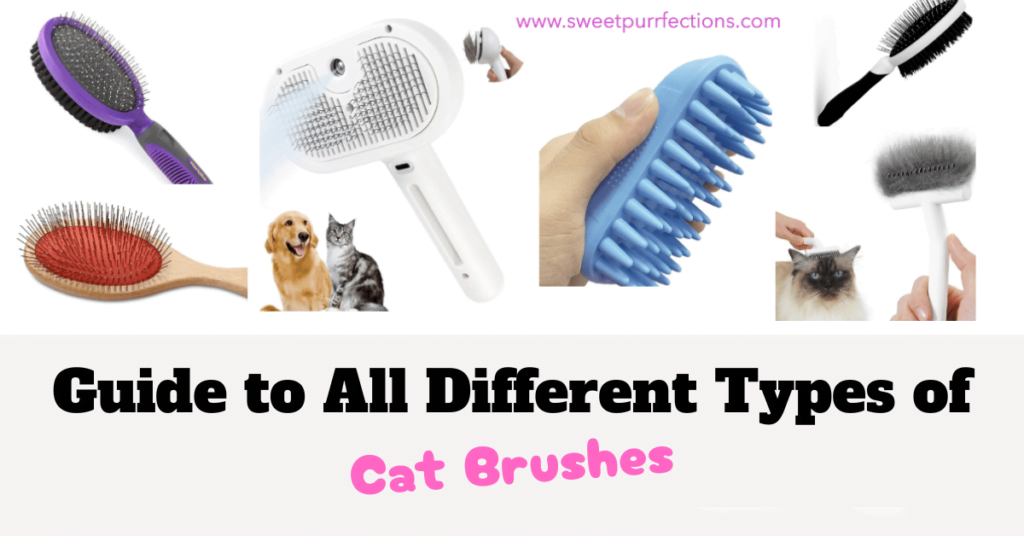This post contains affiliate links and I will be compensated if you make a purchase after clicking on my links.
The Essential Guide to Brushing Your Persian Cat
In this guide, we’ll explore how to brush your Persian cat, a crucial component of their overall grooming regime. Known for their opulent, long fur, these majestic felines require regular brushing to keep their coats in top condition, prevent matting, and minimize shedding. This practice contributes significantly to their health by removing dirt and evenly distributing natural oils across their fur.
Effective brushing is just one part of a comprehensive grooming routine that may include eye cleaning, nail trimming, and ear care, all essential for keeping your Persian in regal form.
What You Need: The Brushing Toolkit
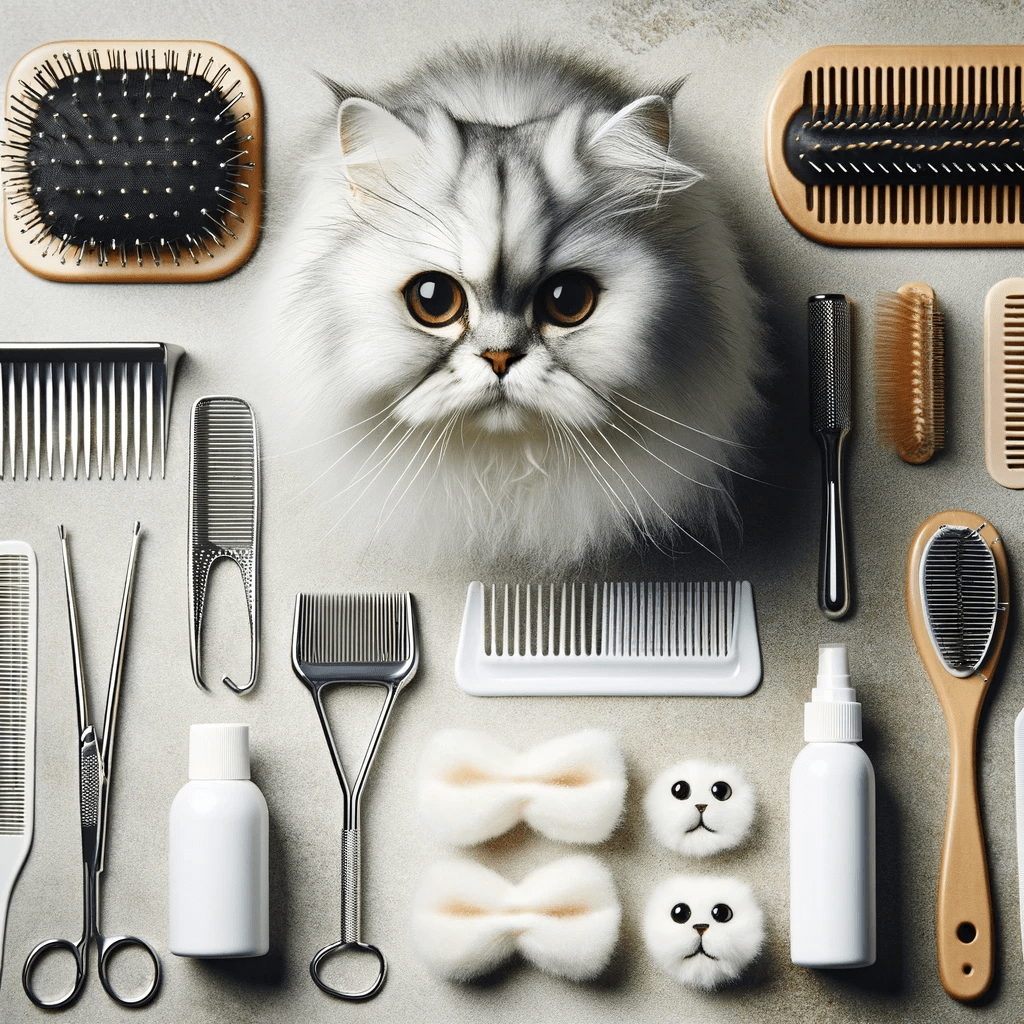
Before diving into the fluff-management process, it’s crucial to arm yourself with the right tools. Here’s what you’ll need to turn your grooming sessions into a purr-fectly smooth experience:
- Comb: A wide-tooth comb is used to tackle larger tangles and mats, while a fine-tooth comb is ideal for more detailed grooming.
- Slicker Brush: This grooming tool features fine, tightly packed steel bristles, angled at the tips to efficiently detangle and remove loose fur, ideal for managing dense coats.
- Clippers: Quiet clippers keep the fur around the posterior and other areas trimmed and tidy.
- Grooming Mat (Optional): Stabilizes your cat and collects fur during grooming.
- Mat Splitter (Optional): Safely cuts through mats for easier grooming.
Preparation: Setting the Stage for a Smooth Brushing Session

Creating a calm environment and knowing how to handle your cat safely are fundamental to keeping the brushing experience pleasant for both of you. Here’s how you can set the stage for a seamless grooming adventure:
Create a Zen Brushing Space
- Choose the Right Location: Opt for a quiet, familiar spot in your home where your cat feels secure. Avoid noisy areas or places with a lot of foot traffic, which can increase your cat’s anxiety.
- Control the Ambience: Soft background music can soothe both you and your cat, making the grooming session more relaxing. A consistent, gentle sound masks any sudden noises that could startle your Persian.
- Maintain a Routine: Cats love routine, so try to schedule grooming sessions around the same time and place. This predictability helps your cat feel more at ease with the process.
Handling Your Persian Cat with Care
- Support and Comfort: Always support your Persian cat’s body and feet. Never let them feel like they are hanging or unsupported, as this can cause stress and resistance.
- Gentle Restraint: Use a gentle but firm hold. Place one hand under the chest and the other around the hindquarters when lifting or holding your cat. This ensures they feel secure but not restricted.
- Breaks are Key: If your cat shows signs of stress or discomfort, give them a little break. Let them walk around or play for a few minutes before continuing. This helps keep the overall experience positive.
A Step-by-Step Guide on How to Brush Your Persian Cat
By following this step-by-step guide, you’ll ensure that every brushing session enhances your cat’s appearance and comfort, reducing the risk of matting and promoting overall skin health.
Step 1: Detangle with the Wide-Tooth Comb
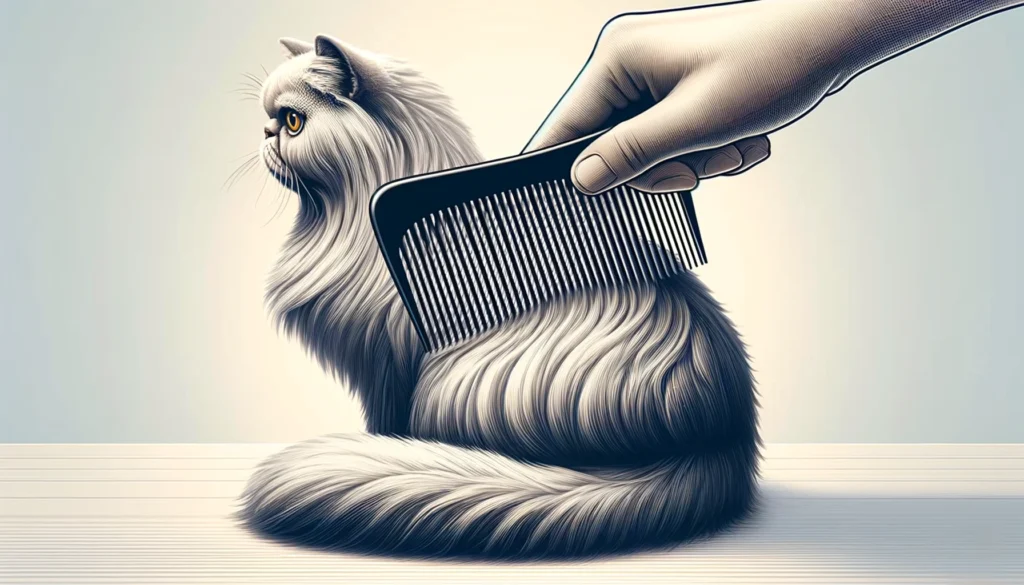
Start combing at the back of your cat’s head and gently work your way toward the tail, combing with the grain of the hair. Pay special attention to common problem areas where tangles often develop, such as under the collar, behind the ears, and especially in the armpits and belly.
As you comb, use quick, yet gentle strokes to effectively remove excess fur and help detect any matting. It’s crucial to approach tangles with care; if you encounter resistance, ease the comb around the knot from various angles to gently tease it apart without causing any discomfort to your furry friend.
While combing against the grain can sometimes help in removing the undercoat more thoroughly, it’s important to use this technique with caution. Only attempt this if your cat remains calm and comfortable.
Step 2: Refine with the Fine-Tooth Comb
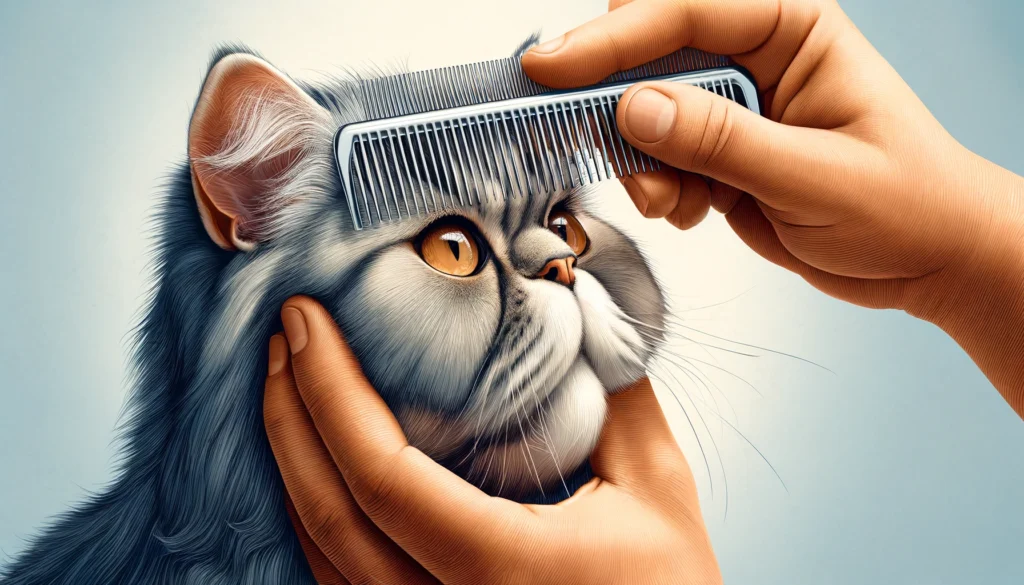
After you’ve managed the major knots with a wide-tooth comb, it’s time to focus on the finer details. Switch to a fine-tooth metal comb, which is ideal for capturing smaller tangles and ensuring a thorough grooming. This finer comb excels in fine-tuning the detangling process and removing any remaining knots that the larger comb may have missed.
Carefully comb through the entire coat, including the delicate areas around the face and paws. These sensitive regions require gentle handling to avoid discomfort. When combing the face, ensure you work with the grain of the hair and exercise caution around the eyes, nose, and ears to prevent any irritation.
Step 3: Smooth and Shine with the Brush
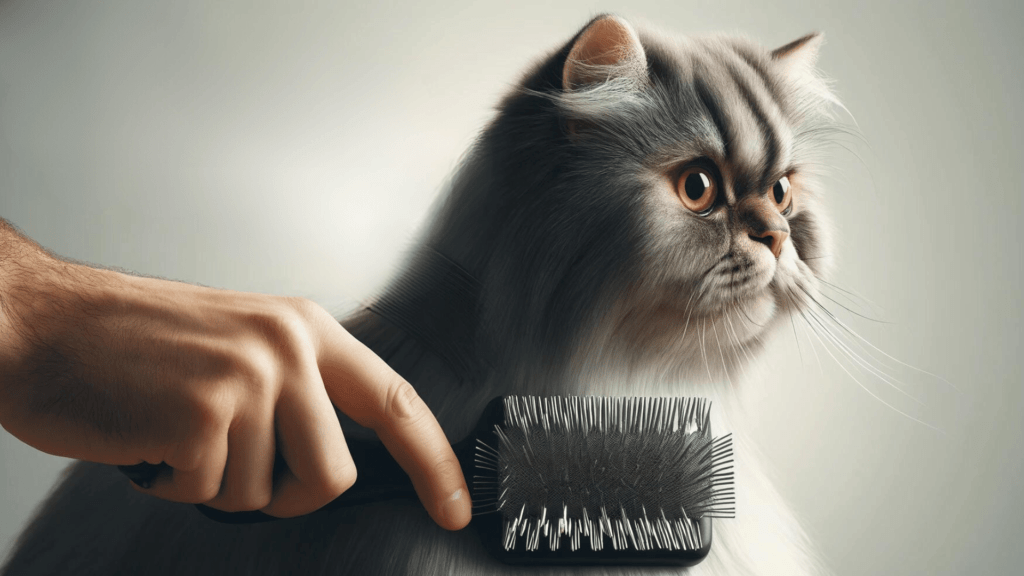
Once the surface coat looks sleek, switch to a brush with steel bristles (slicker brush) to carefully thin out the undercoat, preserving the health of the topcoat.
Begin at the head and work your way gradually towards the tail, moving with the grain of the fur. Continue brushing until you notice minimal fur on the brush, indicating that the undercoat has been effectively removed—usually, this requires checking the brush after every few strokes to remove accumulated hair.
Step 4: Secure and Collect on the Grooming Mat
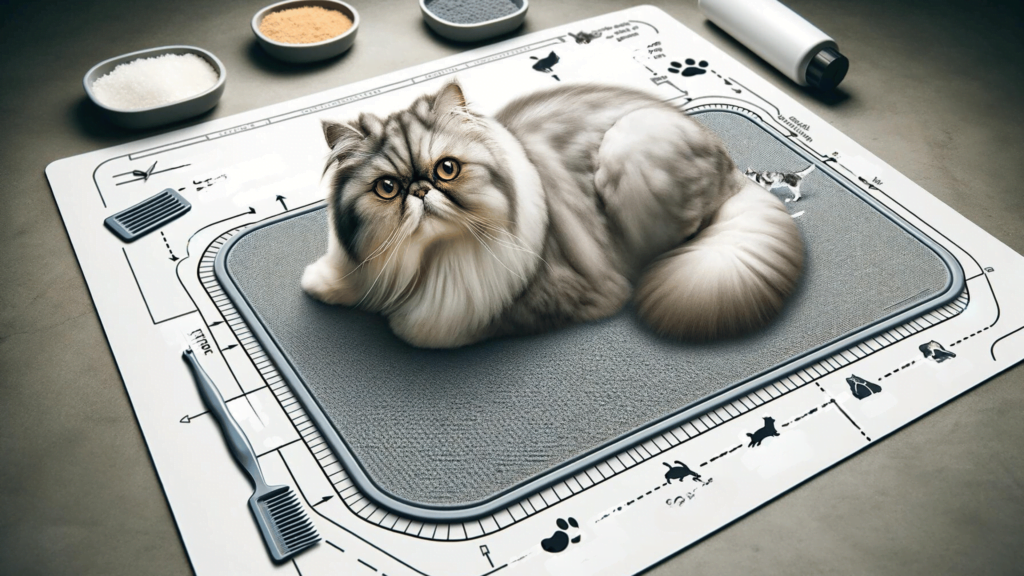
For a secure and efficient grooming session, place a non-slip grooming mat under your Persian cat. This mat not only keeps your furry companion comfortable and stable but also protects your flooring from stray fur. The non-slip feature ensures that your cat won’t slide around, which can help prevent anxiety or injury during grooming.
Step 5: Special Care – Hygiene Trim with Clippers (Bonus Step)
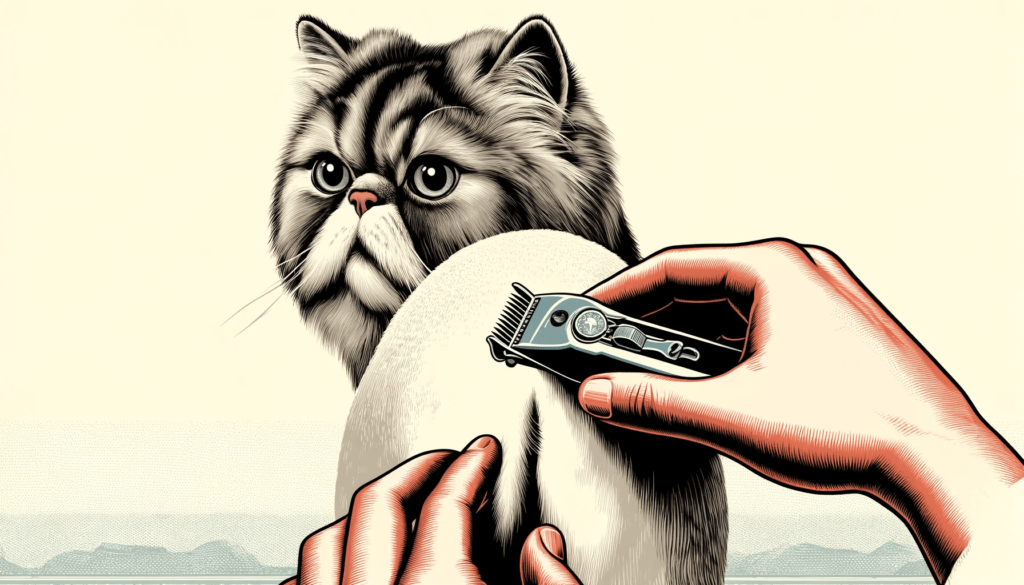
When grooming your Persian cat’s hindquarters choose a small, quiet pair of clippers to trim the fur around the back area of the legs near the anus.
This regular maintenance, ideally every three weeks, is crucial as Persians often get feces stuck in their fur, making them prone to infections. Opt for clippers instead of scissors, as scissors can pose a risk of accidental injury.
Post-Brushing Care
After each grooming session, it’s wonderful to shower your Persian with some extra love and attention. Offering a favorite treat or engaging in a preferred play activity can make a world of difference. These rewards help your furry friend form positive associations with brushing, setting the stage for smoother sessions in the future.
Sometimes, the best reward can be simple—like a cuddle or some quiet time together. This not only reinforces grooming as a positive experience but also strengthens the bond between you and your cat.
Troubleshooting Common Issues
Even with the best grooming routine, you may encounter a few challenges. Here’s how to handle some common issues effectively.
Persistent Matting
- Mat Splitter Use: When dealing with stubborn knots, consider following this detangling process and ultimately utilizing a Mat Splitter. It’s a safe and effective tool designed to slice through mats without harming your cat’s skin.
- Regular Checks: For cats prone to matting, increase the frequency of grooming sessions to prevent mats from becoming too tight or extensive.
Cat Anxiety During Grooming
- Gradual Introduction: If your cat is anxious, introduce grooming tools and sessions gradually. Allow them to sniff and explore the tools before using them.
- Short Sessions: Keep grooming sessions short and positive, gradually increasing the time as your cat becomes more comfortable.
Dealing with Shedding
- Frequent Brushing: Increase brushing during shedding season to help manage the excess fur and prevent it from spreading around your home.
- Proper Tools: Ensure you’re using the right type of brush to effectively capture loose fur without irritating the skin.
Brushing Frequency
- Regular Schedule: Brush your Persian ideally daily, but at a minimum, twice a week. Increase the frequency during shedding seasons or if your cat has particularly dense fur.
- Consistency Is Key: Try to groom at the same times each week to create a routine that your cat can expect and adapt to.
Important: As you pamper your Persian with a good brushing, keep an eye out for any unusual signs like lumps, growths, scabs, rashes, or flaky patches in their fur. These could be indicators of health issues. If you spot anything out of the ordinary, make a note to discuss it with your vet.
Enhancing Your Persian’s Well-being Through Regular Grooming
Mastering how to brush your Persian cat not only keeps their coat beautiful and free of mats but also strengthens the bond between you and your feline companion. Each grooming session becomes a chance to check on their overall health and catch any early signs of issues.
It’s a crucial component of caring for your Persian’s well-being, ensuring they look and feel their best.
Meet Sean, a fintech whiz with a penchant for pet purrs and blockchain buzz. After a decade of fintech feats, Sean's tech talents leaped from ledger lines to litter lines, driven by a passion for pets and a vision for a more connected pet care community. With three critter companions as co-pilots, Sean launched this blog to share a treasury of pet-friendly tech tips and tales.

